Fatima Mohammed Ali and her two young sons were planting vegetables on her family’s farm in a remote region of northern Yemen last year when an airstrike suddenly hit the family’s home. The massive blast demolished the house, across from the fields where they were working, as well as a swing set nearby. Ali’s 10-year-old daughter Abeer, who had been on the swing, was killed instantly.
Terrified they could be hit by another airstrike amid Yemen’s civil war, Ali’s family left the farm. They found a place to dig a makeshift underground bunker, which Ali described as a “big hole covered with curtains,” for the family to live in.
But without the farm’s produce to eat and sell, they struggled to survive. By April, the war looked set to take another of Ali’s children. This time, it was 3-month-old Ishraq. Diagnosed with severe malnutrition, Ishraq was fighting for her life at the al-Jamhouri medical center in Saada City.
“Our children cry day and night because of the lack of food and clean water,” Ali told reporter and activist Ahmad Algohbary at the hospital. “There are times that I wish for death instead of living this life.”
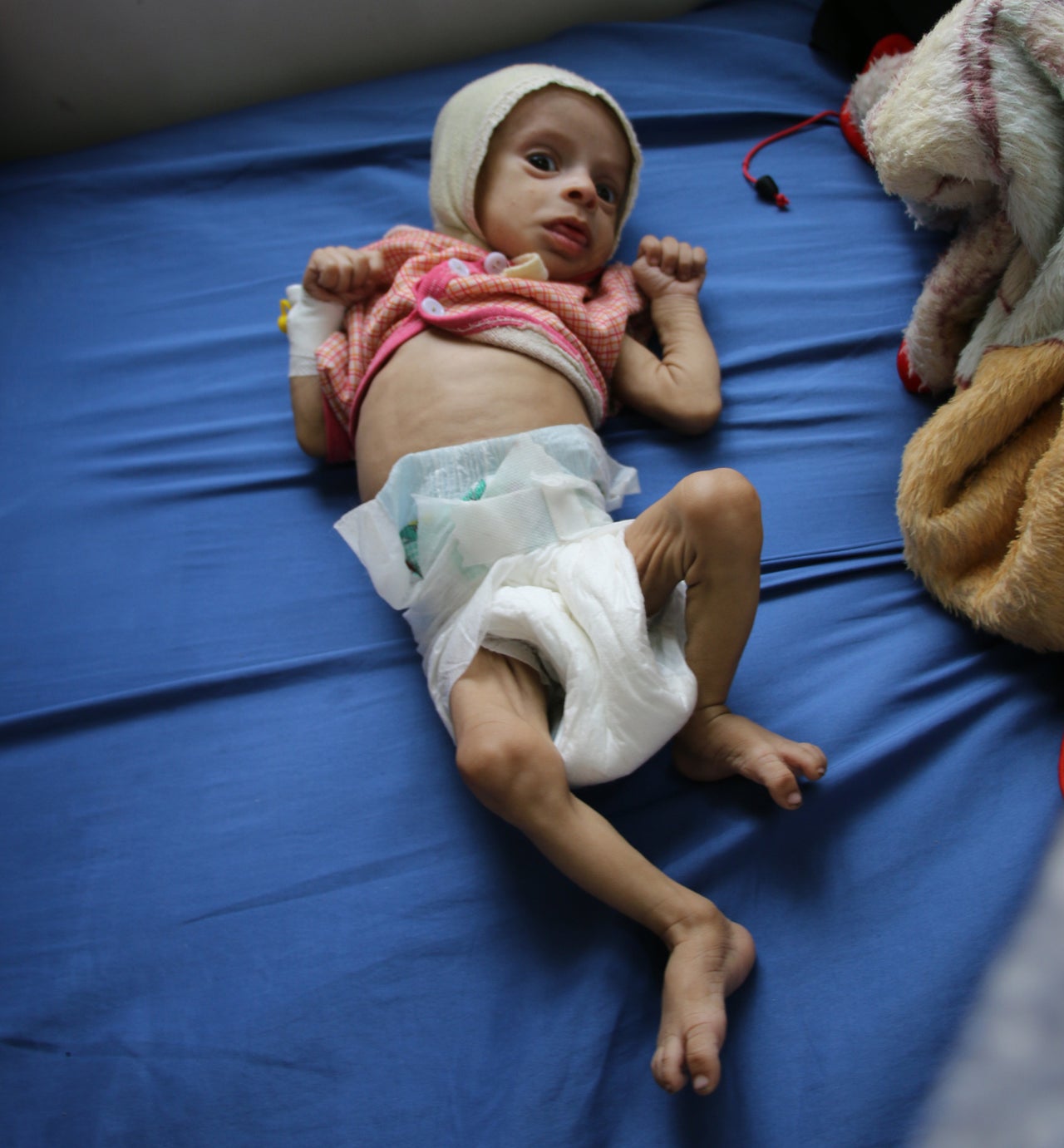
Located in northern Yemen along the Saudi border, Saada governorate is one of the most isolated and dangerous parts of the war-torn country and nearly inaccessible to journalists and foreigners. The constant violence has made civilian life extremely difficult. Bombings have reduced many schools and markets in the once-lively Saada City to rubble. In rural areas, where the air campaign has been relentless and resources have traditionally been scarce, the destruction is even worse.
Before the war, Yemen relied on imports for more than 90 percent of its staple foods. These days, aid deliveries to Saada are complicated by checkpoints and road blockades manned by military forces loyal to the government as well as the bombings by the international coalition that supports President Abed Rabbo Mansour Hadi.
Saada governorate is the birthplace of the Houthi movement, an armed Shiite rebellion that swept through the southern part of the country in 2014 and eventually overtook the capital. The offensive forced Hadi’s government to flee further south to the port city of Aden. The government soon garnered support from a military coalition of nine Middle Eastern and African countries, led by Saudi Arabia.
Both the U.S. and the U.K. provide the Saudis with arms. In May, the Trump administration committed to $110 billion in weapons sales for the Saudi kingdom.
The coalition’s airplanes have conducted at least 2,166 bombings in Saada governorate since the start of 2015, according to the Yemen Data Project, an independent effort to collect and disseminate information on the war. That’s an average of 127 bombings each month. Strikes on non-military sites like mosques, markets and hospitals outnumber hits on military targets 3 to 1, the database says.
So far this year, Saada has seen 268 bombings. The most recent attack, on a market last month, killed at least 25 civilians who were out shopping.
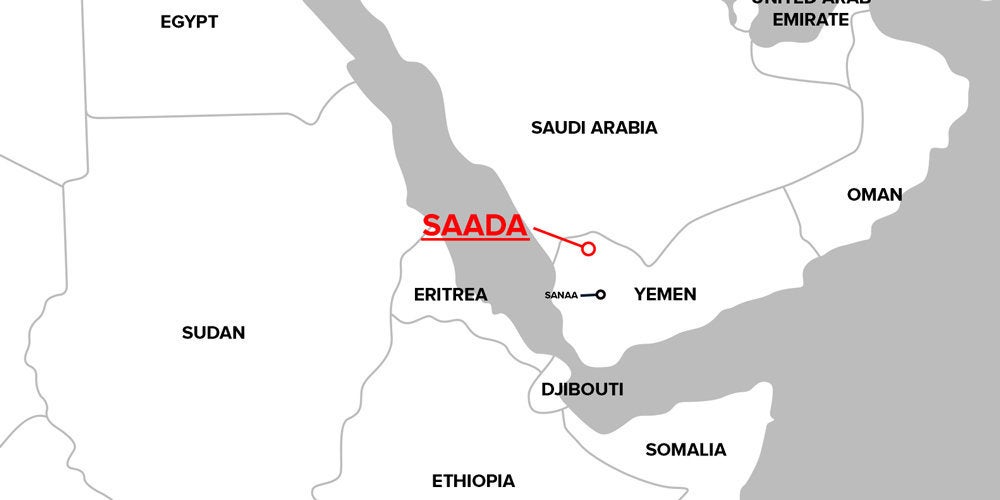
In Saada City, aid workers have warned, the nutritional situation is at emergency levels. The city has the highest rates of stunted growth and development in the world, with 1 in 8 children affected due to malnutrition. Over 67 percent of children living in the governorate are chronically malnourished, according to UNICEF. Nearly 10 percent of children under age 5 are acutely malnourished, with 2 percent of that group suffering severe acute malnutrition.
“We only had a small number of cases of malnutrition before the war, but after the war, we have gotten so many,” Dr. Ali al-Kamadi, who works in al-Jamhouri’s nutrition department, told Algohbary in April.
The April visit was the citizen journalist’s fifth trip to Saada governorate this year. Algohbary, who lives in Yemen’s capital city of Sanaa, sat down with the staff at al-Jamhouri and the families of several children diagnosed with malnutrition. He provided HuffPost with photos as well as Arabic transcripts of his interviews.
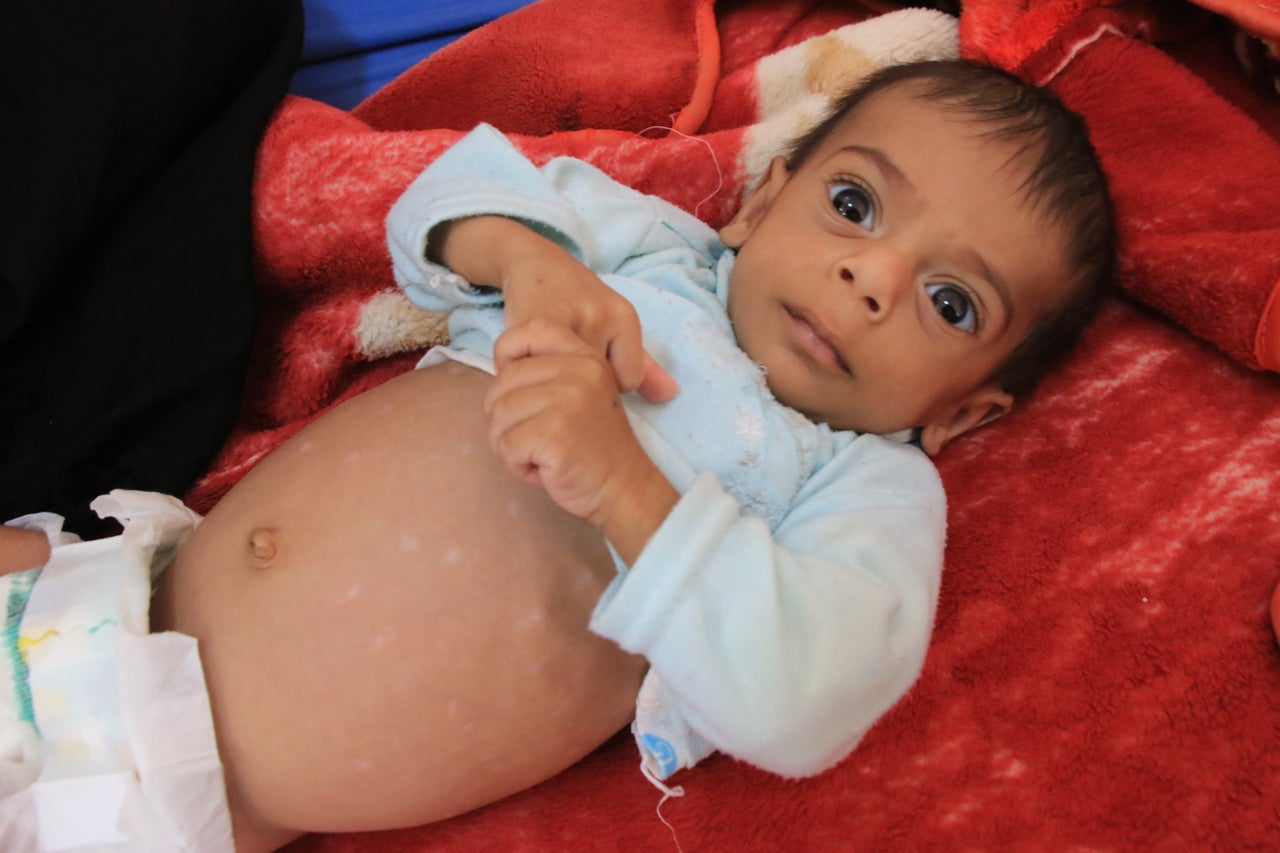
Even as the situation in Saada deteriorates daily, al-Kamadi said the hospital has still managed to provide crucial life-saving support for children in the region, including the baby son of Nadia Mohammed.
Mohammed told Algohbary that she had sold all of her gold to buy her family any food she could find. The 33-year-old mother couldn’t recall the last time her family had eaten meat or rice.
In the weeks and months before arriving at the hospital, her 10-month-old baby, Naji, had cried relentlessly. Mohammed and her husband noticed that the baby’s stomach had started to swell and they had cauterized it in a desperate effort to stop the swelling and alleviate the pain. The centuries-old medical practice is used in Yemen to treat a wide range of diseases, only sometimes effectively.
“We thought it would help him recover, but he kept crying,” Mohammed recalled.
Finally, she heard about al-Jamhouri from neighbors. At the hospital, she learned that Naji was suffering from a severe type of malnutrition called kwashiorkor, which is caused by a lack of protein and often leads to a bloated stomach. After receiving treatment at al-Jamhouri, Naji is recovering at home with his family.
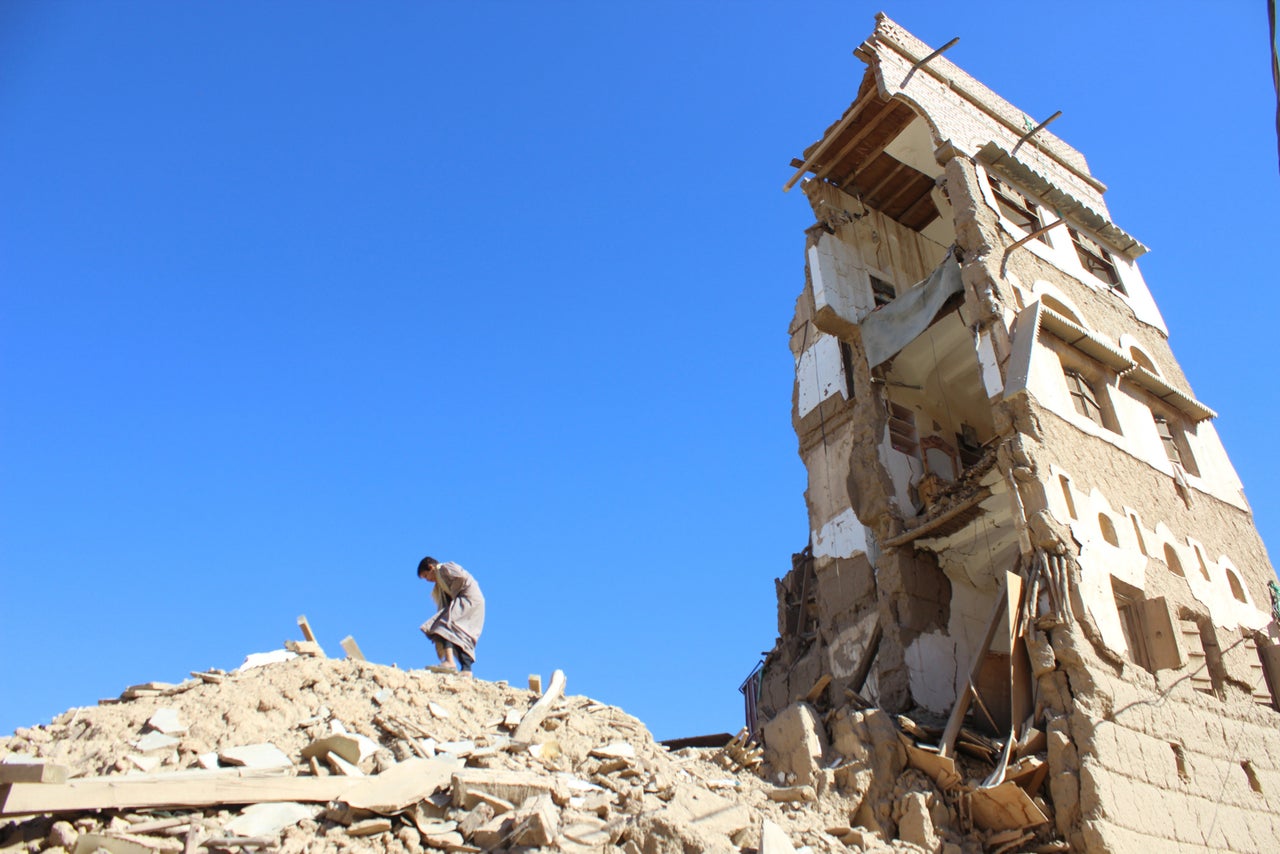
Children like Naji are on the frontline of Yemen’s health crisis. Even before the civil war ravaged the country, Yemen was the poorest nation in the Middle East. Today, more than 2 million children there are malnourished. Half a million suffer from severe acute malnutrition, which is a life-threatening condition.
Weakened by the lack of the food, children are at increased risk of dying from preventable diseases like cholera. Yemen is battling a cholera outbreak that has already affected 300,000 people and has killed more than 1,600.
Every year, about 40,000 children in the country don’t live past their fifth birthday. “The conflict in Yemen is fueling one of the world’s worst children’s crises,” Bismarck Swangin, a communications specialist with UNICEF based in Sanaa, told HuffPost.
The crisis is compounded by the damage the war has done to the country’s health care system. More than half of medical facilities are partially destroyed or closed due to severe shortages in medicine, equipment, staff and infrastructure. A de facto naval blockade imposed by the Saudi-led coalition has restricted the importation of food, medical supplies and fuel. Civilians have been prevented from traveling abroad for medical treatment ever since commercial flights to Sanaa were suspended in August 2016.
The Houthi rebels, government forces and coalition planes have all been accused of targeting health centers ― by bombing facilities, stealing ambulances, and looting medicine and medical equipment, according to a report by Watchlist on Children and Armed Conflict.
“Hospitals are being systematically attacked as a tactic of war by Saudi and their allies,” said Christine Monaghan, research officer at the Watchlist. “Those attacks, coupled with the denial of access to humanitarian aid because of the blockade, has meant that the civilian population, particularly children, are dying of preventable diseases on a large scale,” she added.
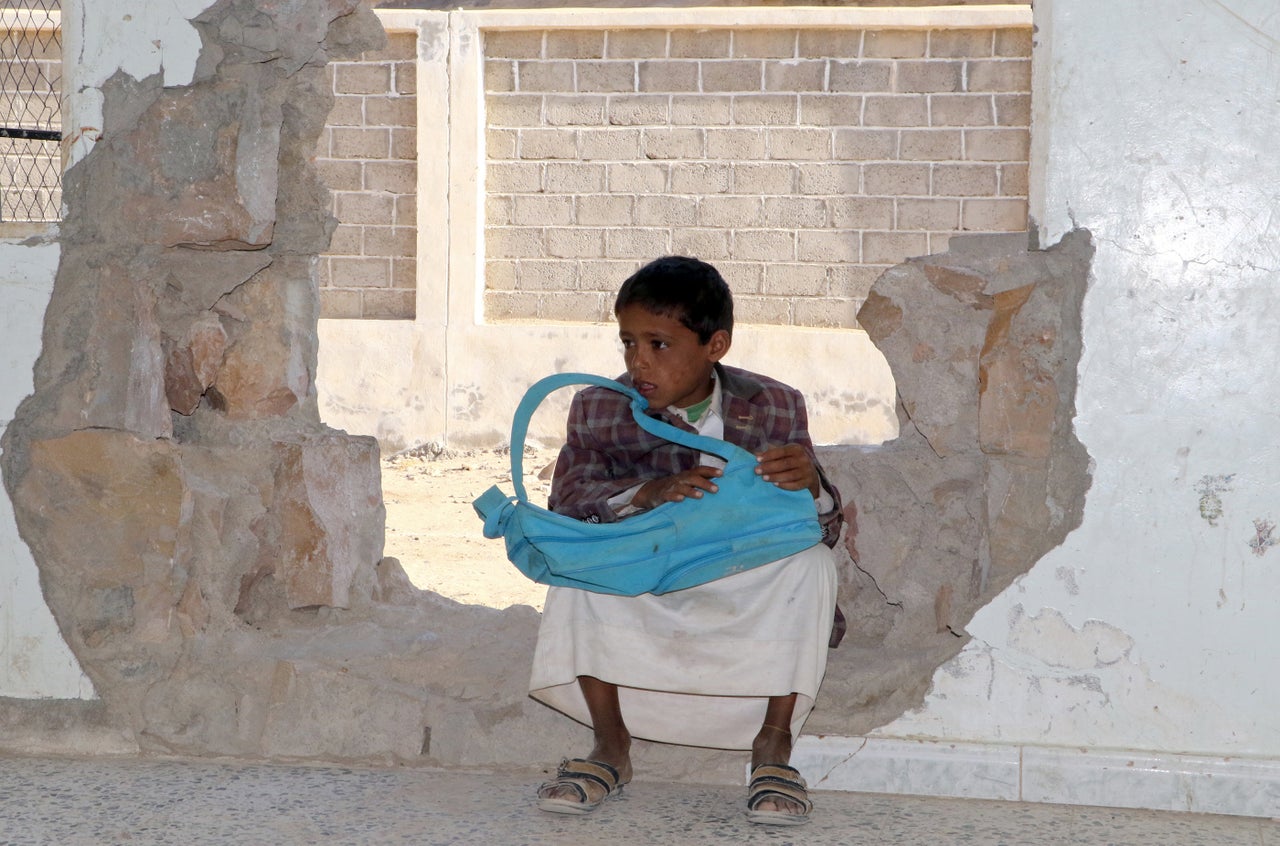
Before the war began in 2015, Saada governorate counted 700,000 residents, but many civilians fled as resources became scarce and the Saudi coalition urged them to evacuate in 2015. The population of Saada City itself has been cut in half with just 25,000 civilians remaining. The al-Jamhouri hospital is a rare lifeline to those caught between poverty and violence.
It is one of perhaps no more than four functioning medical centers in the governorate. Al-Jamhouri contains a maternity ward, a trauma center, surgical wards and emergency rooms. The international medical organization Doctors Without Borders, also known by its French acronym MSF, had supported the hospital with drugs, medical equipment and staff. However, it was forced to withdraw its people in August 2016 when the increase in bombings made Saada too dangerous.
Many doctors who still work in Yemen are near despair.
Dr. al-Kamadi said that families often have to break off treatment for their children at al-Jamhouri when they run out of funds to cover the cost of medicine, food and hotel stays.
Dr. Mariam Aldogani, who works in Sanaa for the international aid organization Save the Children, said doctors in the country see up to 180 patients a day, even though many health workers have not received salaries for months.
“We cannot keep up,” Aldogani told HuffPost over Skype. “Medical workers are struggling. We are simply not able to cover the medical needs of the country.”
“I’ve seen the fear in the eyes of mothers,” Aldogani added. “The hardest part of my job is not being able to save everyone.”
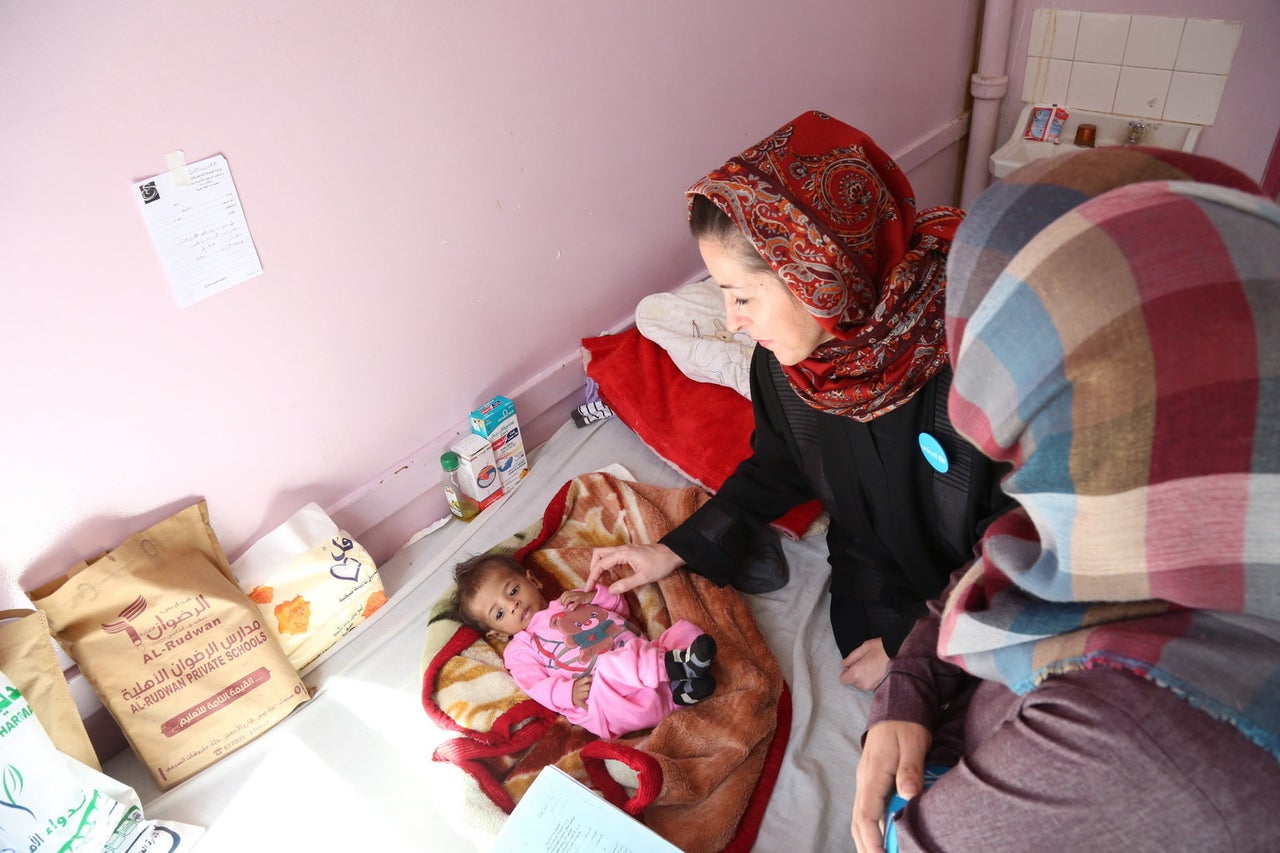
As the clock is ticking, UNICEF and other humanitarian organizations are calling for donations. Members of the international community pledged to meet just over half of the United Nations’ $2.1 billion appeal at a summit in Geneva, Switzerland, in April.
“I fail to grasp how the international community can see this crisis unfold without doing its utmost to limit the suffering that Yemenis are facing,” Mutasim Hamdan, Yemen country director for the Norwegian Refugee Council, said during the summit.
Aid workers are pleading with countries like the U.S. and the U.K. to go beyond donating and stop the flow of arms to the warring parties in Yemen.
“The day in which there are no weapons sold to any warring parties anywhere in the world, it would be very difficult for war to take place,” U.N. Secretary General Antonio Guterres said at the summit when asked about the complicity of major donor countries that have also supplied arms for Yemen’s conflict.
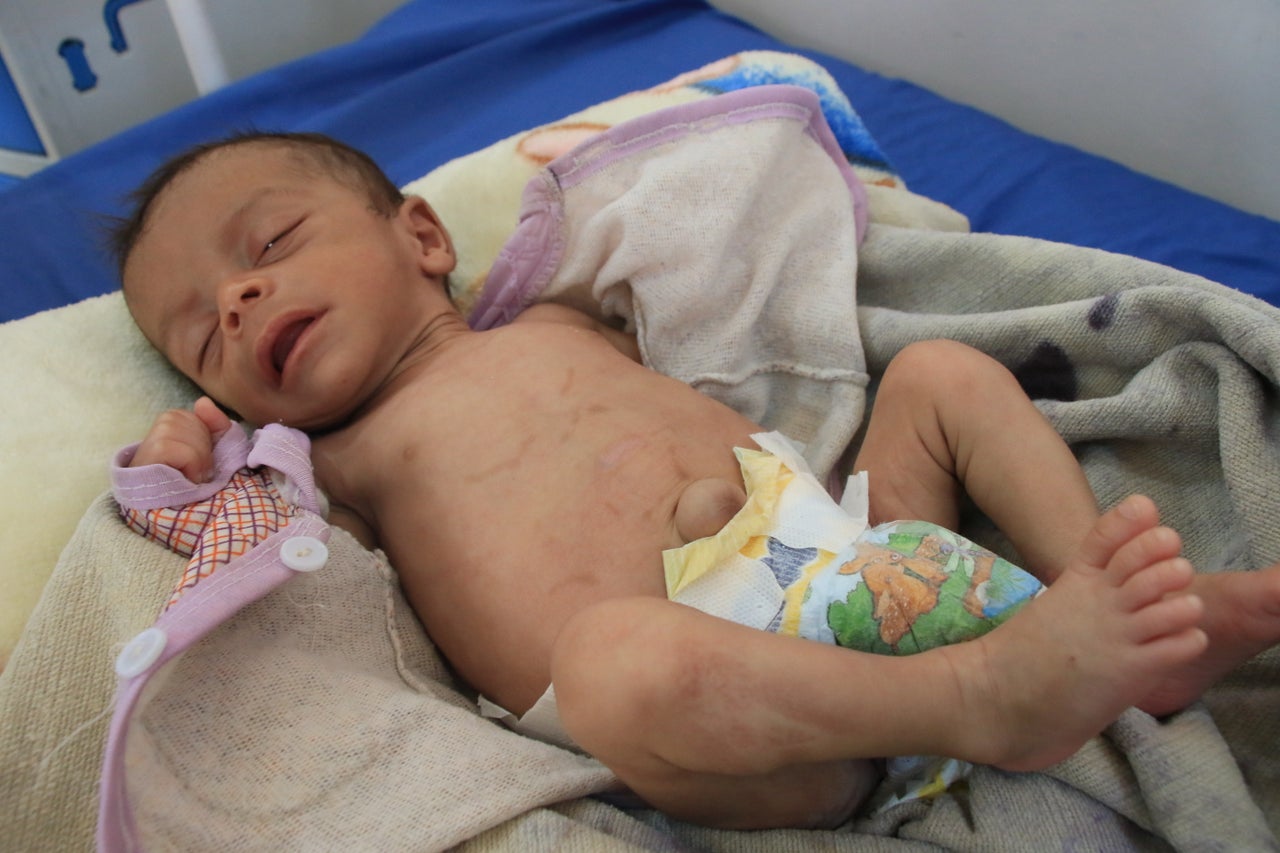
In the meantime, Yemen’s smallest citizens are running out of time.
Grandmother Alia Alaloot told Algohbary about her long journey in search of safety. Alaloot’s adult children were farmers in Saada’s Saqeen district when a cluster bomb hit the family farm earlier this year. Alaloot was left to raise her newborn grandson Faris alone.
She and the baby first sought shelter in a refugee camp in al-Manbaah, a city located in the neighboring Hajjah governorate near the Saudi border. But much like Saada City, the Houthi-controlled Manbaah was the frequent target of Saudi shelling. It wasn’t long before food in the refugee camp ran out.
Alaloot realized she could not stay. She and the starving baby set out on a six-hour trip to al-Jamhouri, traveling by donkey and then by cab.
After months of intensive treatment at the hospital, Faris is recovering. He’s in stable condition.